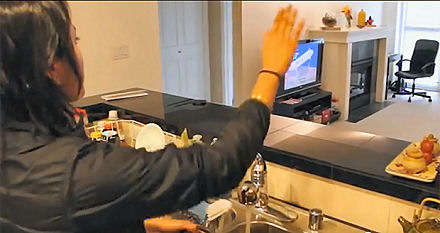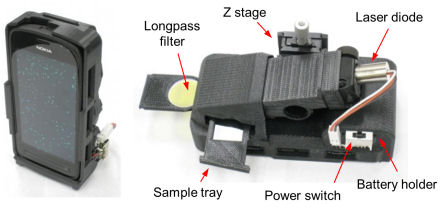
In a clever use of Doppler frequency shifts, computer scientists have shown it’s possible to use the existing WiFi signals around us to detect specific movements without needing sensors on the human body or cameras.
The University of Washington researchers behind the development say that with an adapted WiFi router and a few existing wireless devices around the house, users could control their electronics and household appliances from any room in the home with a simple gesture.
“This is repurposing wireless signals that already exist in new ways,” said lead researcher Shyam Gollakota. “You can actually use wireless for gesture recognition without needing to deploy more sensors.” The new technology, which Gollakota calls “WiSee,” is making its debut at The 19th Annual International Conference on Mobile Computing and Networking.
The concept is similar to Xbox Kinect which uses cameras to recognize gestures. But Gollakota says WiSee is simpler, cheaper and doesn’t require users to be in the same room as the device they want to control.
He explained that the modified router “listens” to all of the wireless transmissions coming from devices throughout a home. When a person moves, there is a slight change in the frequency of the wireless signal. Moving a hand or foot causes the receiver to detect a pattern of changes known as the Doppler frequency shift.
Although these frequency changes are very small, the researchers developed an algorithm to detect them. The technology also accounts for gaps in wireless signals when devices aren’t transmitting.

The modified router is effectively one receiver with multiple antennas. Each antenna tunes into a specific user’s movements, so as many as five people can move simultaneously in the same residence without confusing the receiver.
If a person wants to use the WiSee, she would perform a specific repetition gesture sequence to get access to the receiver. This password-like handshake would also keep the system secure and prevent a neighbor – or hacker – from controlling a device in your home.
Gollakota believes that WiSee could finally make the “smart” home a reality, allowing users to turn off the oven timer with a simple wave of the hand, change a song, or turn on the coffeemaker from bed. The researchers plan to look next at the ability to control multiple devices at once.
Related:
Discuss this article in our forum
Harvested TV, radio signals power devices
Visible light data network under development
Nocebo effect behind electrosmog illnesses, say European researchers
WiFi breakthrough: over-and-out for over-and-out








Comments are closed.